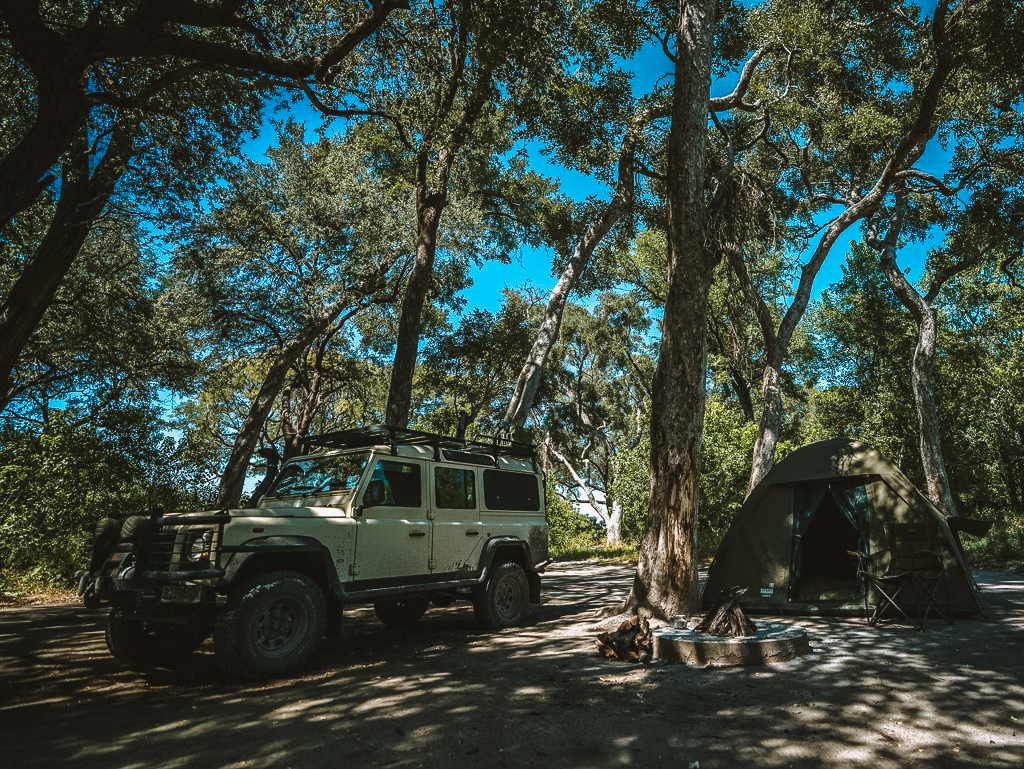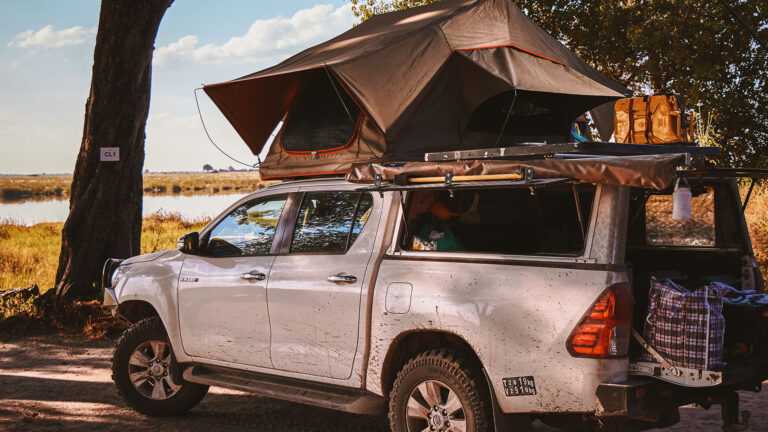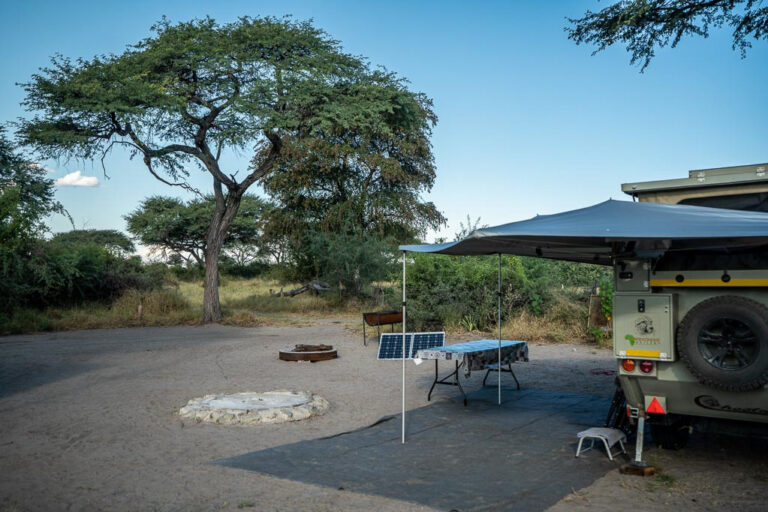Self drive camping in Botswana offers the ultimate adventure tailored to your pace. Experience the freedom to explore Botswana’s stunning landscapes and abundant wildlife at your own schedule.
Discover unique sites, manage your itinerary, and enjoy a more intimate connection with nature without the constraints of an organized tour.
Our guide provides everything you need to plan the perfect self-drive camping trip in Botswana, from top campsites to essential gear.
Highlights
- Self-drive camping in Botswana offers flexibility, affordability, and an authentic wilderness experience, allowing travelers to customize their adventures.
- Booking campsites in advance is essential, as popular locations fill up quickly and require communication with private operators and the Department of Wildlife and National Parks.
- Having the right gear, including a 4WD vehicle and essential supplies, is crucial for navigating Botswana’s remote areas and ensuring a safe, enjoyable camping experience.
Why Choose Self Drive Camping in Botswana?

Opting for a self-drive camping safari in Botswana provides unmatched freedom and flexibility. Unlike organized tours with fixed schedules, a self-drive adventure lets you linger at breathtaking wildlife sightings or take unplanned detours to explore hidden gems. This control over your itinerary ensures a unique experience tailored to your interests and pace.
Additionally, a self-drive camping trip is often more economical. Combining transportation and lodging costs allows travelers to enjoy Botswana’s incredible landscapes and wildlife without breaking the bank. This affordability makes it accessible to a wider range of adventurers, enabling more people to experience the magic of Botswana’s national parks and reserves.
The authenticity of self-drive camping in Botswana is perhaps its most compelling feature. Setting up your own campsite, cooking under the stars, and falling asleep to the sounds of the bush create a profoundly satisfying experience.
This immersion in Botswana’s natural environment fosters a deeper appreciation of its beauty and wildlife.
Booking Your Campsites in Advance
Booking your campsites well in advance is crucial when planning a Botswana camping safari, especially during peak months.
Campsites can fill up quickly due to high demand, often requiring reservations up to a year ahead. This proactive approach guarantees your desired campsite, enabling you to plan your itinerary around confirmed accommodations.
Booking can be challenging, especially when dealing with private operators and the Department of Wildlife and National Parks (DWNP). Communication delays are common, with responses taking days or even weeks. Therefore, it’s essential to have printed booking confirmations before your trip to avoid any last-minute hassles.
Early reservations with private operators and ensuring all documentation is in order will help streamline your camping experience.
Essential Gear for a Self Drive Safari

Having the right gear is critical for a successful self-drive camping safari in Botswana. The rugged terrains and remote locations necessitate a 4WD vehicle, indispensable for navigating Botswana’s national parks and reserves.
These vehicles, often equipped with rooftop tents, provide safe, elevated sleeping arrangements and convenient camp setup.
Beyond a reliable vehicle, being well-prepared with essential supplies is crucial. This includes navigation tools, adequate food and water, and vehicle recovery equipment, especially during the wet season.
A thorough checklist of must-haves, such as cooking utensils, sleeping bags, and first-aid kits, ensures readiness for any situation, making your camping trip enjoyable without unnecessary interruptions.
Comfort and safety aspects of your gear are also important. Comfortable tents and appropriate clothing for varying temperatures are vital.
Ensuring your vehicle is well-equipped with spare parts and having a portable coffee maker for early morning starts can significantly enhance your overall experience. These small details can make your camping safari both enjoyable and memorable.
Navigating Botswana’s Roads
Navigating Botswana’s roads can be an adventure. While main roads are primarily tarred, major areas often lack sufficient signage, making a detailed map essential.
Speed limits vary, with 120 km/h on tarred roads and 40 km/h in national parks. Sticking to these limits is crucial for safety, especially due to frequent wildlife crossings.
Most rental companies in Maun provide updated road condition information, significantly aiding trip planning. An international driver’s license and vehicle registration documents are required for driving in Botswana.
Additionally, driving at night is not recommended due to low visibility and the danger of wildlife on the roads.
Top Campsites in Botswana

Botswana features some of the most remarkable campsites, each offering unique experiences, including botswana safari, botswana camping safaris, and visit botswana.
From the renowned Chobe National Park to the pristine Moremi Game Reserve and the enchanting Okavango Delta, the country provides a variety of camping options.
These range from:
- National park campsites
- Community-run sites
- Private campsites
- Wild camping areas
Most campsites lack electricity but often have basic facilities such as ablution blocks and Fire Pit.
The following subsections delve into specific details about the top campsites in Botswana, providing insights into what makes each site special. Whether you seek the abundant wildlife of Chobe or the serene beauty of the Okavango Delta, a perfect campsite awaits you.
Chobe National Park
Chobe National Park is a must-visit for any Botswana camping safari. Known for its abundant wildlife, Chobe is particularly famous for its high concentration of elephants. Visiting Chobe National Park, SKL Savuti Campsite or Linyanti within the park provides direct access to rich wildlife, allowing visitors to observe buffalo, elephants, and antelope right from their campsite.

Staying at SKL Savuti Campsite offers an immersive wildlife experience, with the convenience of basic facilities like ablution blocks and fire pits. The prime location within Chobe National Park makes it an ideal spot for wildlife viewing, ensuring every moment is filled with the sights and sounds of nature.
Moremi Game Reserve
Moremi Game Reserve is another highlight of a Botswana camping safari, renowned for its diverse wildlife and over 400 bird species. Khwai SKL Camp within Moremi offers large, shady campsites and maintains high cleanliness standards. Basic facilities include water taps, campfire pits, and shared ablution blocks equipped with showers and flushable toilets, ensuring a comfortable stay.

Khwai Northgate SKL Camp is also known for excellent game viewing opportunities, making it a perfect base for exploring Moremi Game Reserve. Whether on a game drive or relaxing at the campsite, wildlife encounters here are sure to be memorable.
Okavango Delta
The Okavango Delta offers a unique camping experience, with options ranging from mobile safari trips to luxury tented camps and traditional camping in your own tent or vehicle. One highlight of camping in the Delta is the opportunity for game drives and mokoro trips, allowing exploration of the Delta’s intricate waterways.

Water levels in the Okavango Delta are highest from June to August, offering ideal conditions for mokoro trips and wildlife viewing. The Delta is home to a wide variety of wildlife, including elephants, lions, leopards, cheetahs, hippos, and crocodiles, making it a haven for nature enthusiasts.
Makgadikgadi Pans National Park
Kumaga Campsite, located along the picturesque Boteti River, is a hidden gem for those seeking a tranquil Botswana camping safari experience. This campsite offers an incredible opportunity to witness the seasonal zebra migration, as well as other wildlife such as elephants and wildebeest that frequent the riverbanks.

Kumaga Campsite is equipped with basic facilities, including ablution blocks and fire pits, ensuring a comfortable stay amidst nature. The serene setting along the Boteti River provides a perfect backdrop for relaxation and wildlife observation, making it an ideal spot for travelers looking to immerse themselves in Botswana’s natural beauty.
Whether you’re enjoying a game drive in the nearby Makgadikgadi Pans National Park or simply unwinding by the river, Kumaga Campsite offers a unique and unforgettable camping experience.
Wildlife Encounters and Safety Tips

Encountering wildlife is one of the most exciting aspects of a Botswana camping safari, but it requires strict adherence to safety guidelines. Never walk alone at night in the bush, as most wildlife activity occurs then. Always remain seated inside the safari vehicle during wildlife sightings, and follow your guide’s instructions to ensure a safe experience.
If wildlife enters the camp, do not approach them unless directed by your guide. Respecting these safety tips will enhance your experience, allowing you to enjoy the abundant wildlife and wild animals without unnecessary risks.
Permits and Regulations
Understanding the permits and regulations is crucial when planning your Botswana camping safari. Camping is only permitted in designated campsites within national parks and reserves. To enter a Botswana National Park, you must purchase a permit along with campsite fees. These fees can be paid in cash at the gate or by credit card at DWNP offices.
Always carry your campsite reservation voucher when entering the parks, as it must be presented upon arrival. Proper waste disposal is crucial, and if no rubbish bins are available, you must take your rubbish with you. Adhering to these regulations ensures a smooth and responsible camping experience.
Best Time to Visit for a Self Drive Safari

Botswana is a year-round destination, but the best time for a self-drive safari is from April to October, during the dry winter season.
This period offers optimal conditions for wildlife observation, as animals gather around water sources, making sightings more frequent and predictable. The peak season runs from July to October, coinciding with the dry season’s best game viewing opportunities.
The wet season from January to March is ideal for birding and seeing newborn wildlife, offering a different but equally captivating experience.
Visiting during the shoulder months of April and May provides good weather and fewer tourists, making it perfect for those seeking a quieter adventure.
Packing List for Self Drive Camping
Packing for a self-drive camping safari in Botswana requires careful consideration. Layered clothing accommodates varying temperatures throughout the day.
Warm clothes are crucial for the cold nighttime temperatures during the winter months. Hiking boots and sandals should be included for comfort and practicality during various activities.
A comprehensive checklist of camping essentials includes cooking utensils, sleeping bags, first-aid kits, and navigation tools to ensure safety and convenience. Items like a portable coffee maker, torch with spare batteries, and insect repellent containing DEET are also recommended for added comfort.
Packing light is important, with a maximum of 15 kg per person in soft bags, and carrying ample water—at least 20 liters per person for regular trips and up to 100 liters for desert areas. Proper waste management by using rubbish bins or disposing of rubbish properly when leaving campsites is also crucial.
Activities to Enhance Your Camping Experience
Engaging in various activities can enhance your Botswana camping safari. Guided game drives offer optimal wildlife viewing opportunities during early mornings or late evenings.
Walking safaris provide an intimate experience with the natural surroundings, allowing you to learn about flora and fauna and engage in wildlife tracking.
Cultural visits can deepen your understanding of local communities and their customs, while fishing in designated areas within national parks offers another enjoyable activity. Utilizing bush showers and preparing one-pot meals can add comfort and convenience to your camping trip.
Renting a 4×4 Vehicle
Renting a 4×4 vehicle is a critical step in planning your Botswana camping safari. These vehicles, often equipped with rooftop tents, provide the necessary mobility and safety for navigating rugged terrains.
When choosing a rental vehicle, consider your preferences, budget, ease of travel, and storage options. Picking up the vehicle directly in Maun can save significant costs compared to delivery options.
Motorhome Republic is a recommended resource for finding a rental vehicle in Botswana, and having proficiency in driving a 4×4 along with basic mechanical skills is advantageous for the trip.
Safety Precautions for Remote Areas
Safety is paramount when camping in remote areas of Botswana. Planning is crucial; always ensure your 4×4 vehicle is equipped with sufficient water—at least 100 liters when traveling to dry regions—and fuel, carrying 100 to 150 liters of petrol in jerry cans or long-range tanks. A first aid kit with basic medications is essential, along with a flashlight or headlamp for nighttime navigation.
Other critical safety measures include bringing spare car parts like two spare tires and a complete tool kit. Always camp at designated sites, secure your sleeping area, store food properly, and keep a safe distance from wildlife.
Following the advice of wildlife officers and supervising children constantly will help ensure a safe and enjoyable camping trip.
Budgeting for Your Trip
Budgeting for a Botswana camping safari involves several key considerations. The average cost for a ten-day safari ranges from $2,200 to over $7,000, depending on your itinerary and preferences. Daily expenses for camping in national parks start at around $18, with campsite fees approximately $30 per tent. Meals outside of package deals can cost between $10 to $30 per day.
Renting a 4WD vehicle typically begins at about $100 per day, and additional activities like helicopter flights can cost up to $640 for an hour. Planning for these expenses and factoring in extra costs for permits, fuel, and other essentials will help you manage your budget effectively for the whole trip.
Getting to Botswana
Reaching Botswana can be done via several routes, including flying, driving, and taking buses. Sir Seretse Khama International Airport is the main gateway for international travelers, with flight costs varying from around $663 to over $1,000 depending on the origin.
Travelers need to be aware of border-crossing requirements and necessary documents, such as visas costing approximately $34 for a single entry. Weather conditions may affect road accessibility, and potential delays at border crossings should be anticipated. Proper planning and preparation will ensure a smooth journey to this beautiful country.
Navigating Local Conditions: Wildlife and Weather
Understanding Botswana’s local conditions, including wildlife behavior and weather patterns, is key to a successful self-drive camping trip.
Wildlife Awareness and Behavior
- Wildlife Patterns: Most animals are active during the early morning and late afternoon. Plan your game drives around these times for optimal wildlife viewing.
- Predator Safety: Avoid driving or camping near areas with signs of recent predator activity (e.g., fresh tracks or carcasses). Keep noise to a minimum and never leave children unattended.
- Handling Encounters: If you encounter a dangerous animal on foot, stand still, avoid direct eye contact, and slowly back away. In a vehicle, stay calm and slowly drive away.
Weather Patterns and Considerations
- Dry Season (May to October): Cool, dry weather with minimal rainfall. Daytime temperatures range from 20°C to 30°C (68°F to 86°F), while nights can be cold.
- Wet Season (November to April): Hot, humid weather with frequent thunderstorms. Roads can become muddy and challenging to navigate. Daytime temperatures range from 25°C to 40°C (77°F to 104°F).
- Managing Weather Extremes: Ensure your vehicle is equipped with air conditioning and that you carry sufficient water and sun protection gear. In the rainy season, pack waterproof clothing and consider a tarp or awning for additional shelter.
Summary
In summary, a self-drive camping safari in Botswana offers an unparalleled adventure filled with breathtaking wildlife encounters, stunning landscapes, and the freedom to explore at your own pace. By carefully planning your trip, booking campsites in advance, packing essential gear, and following safety tips, you can ensure a memorable and safe experience in the African wilderness.
Embark on this journey with an open heart and a spirit of adventure, and you’ll discover the true essence of Botswana’s natural beauty. Whether you’re witnessing the majestic elephants of Chobe or navigating the serene waterways of the Okavango Delta, your camping safari will be an unforgettable chapter in your travel story.
Frequently Asked Questions
What is the best time to visit Botswana for a self-drive safari?
For a self-drive safari in Botswana, the best time to go is from April to October during the dry season, when wildlife sightings are at their peak. If you’re interested in birding or seeing newborn animals, consider visiting between January and March instead.
Do I need a 4×4 vehicle for a self-drive camping safari in Botswana?
Absolutely, a 4×4 vehicle is essential for a self-drive camping safari in Botswana due to its rugged terrains. Plus, many come with rooftop tents for a comfortable camping experience!
How far in advance should I book campsites in Botswana?
To secure a spot during peak seasons, it’s best to book campsites in Botswana up to a year in advance, as they tend to fill up fast. This way, you can enjoy your trip without the stress of last-minute planning!
What safety precautions should I take when camping in remote areas?
To stay safe while camping in remote areas, make sure to have enough water and fuel, keep your food secured, and avoid walking alone at night. Following these tips will help ensure a safer and more enjoyable experience.
What are the costs involved in a Botswana camping safari?
A Botswana camping safari can cost anywhere from $2,200 to over $7,000 for ten days, so it’s good to budget for daily camping expenses starting at around $18, plus campsite fees, meals, vehicle rental, and activities. Keep these factors in mind to enjoy your adventure without overspending!



